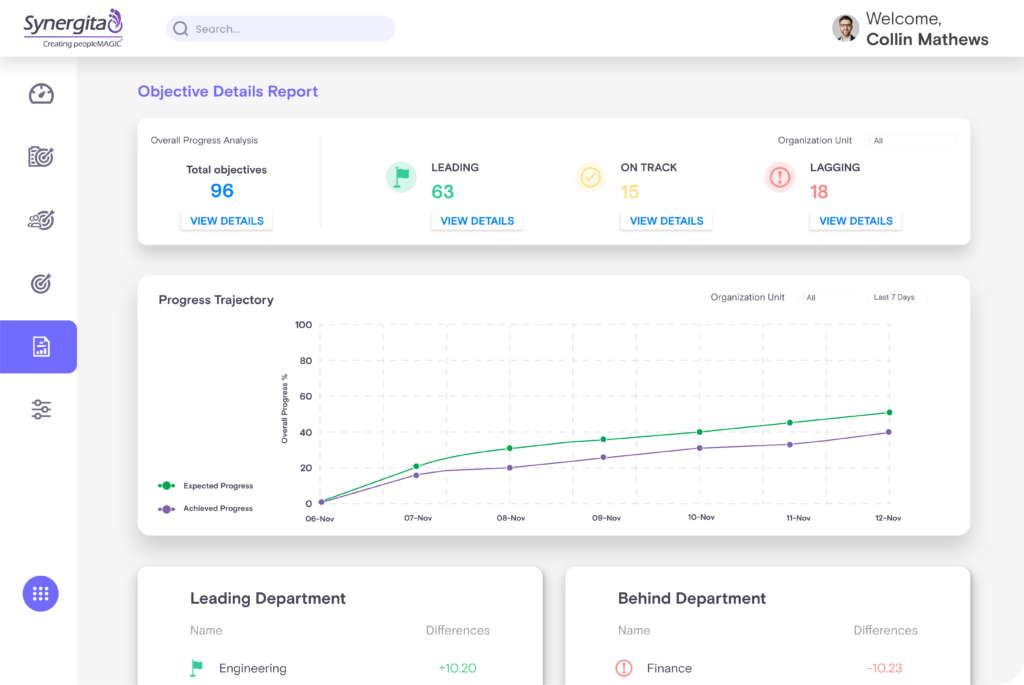How Can You Create a Winning Sales Strategy by Setting the Right OKRs?
Sales teams are often overwhelmed with targets, numbers, and figures. Meeting sales targets every month is surely a daunting task. What if there was a way to create a winning sales strategy by setting the right OKRs? This article is just about that.
There is no one better than you to help your sales teams create a winning OKR strategy. As a business leader, you know better than anyone about your sales teams, their strengths, and the challenges they face.
To help your sales team, you could either use a whiteboard to brainstorm a few objectives or, even better, use Objectives and Key Results (OKRs), a tried-and-true goal-setting method that will ensure your team is driven to achieve their targets. Setting OKRs will help you focus on growth, and research suggests that sales executives who do so experience greater long-term success.
So how can OKRs help you meet your sales targets? Let us find out.
What Is The Role Of OKR In Sales?
Anxiety and dread fill the sales teams if they fail to achieve their targets. To avoid such an unfortunate situation, they mostly require two things: a list of clear goals and a suitable strategy or method for carrying them out.
The OKR framework (Objectives and Key Results) focuses on supporting your sales team in creating such goals and objectives and tracking key performance metrics.
OKRs are a goal-setting strategy that requires a target, a time period, and a list of Key Results. A sales team can first define broad objectives using the OKR framework. Then, each member can determine how they can individually contribute to the team’s overall goal.
By employing the right sales OKRs, managers can guarantee that sales teams understand what they need to achieve and how to measure their success while achieving these objectives.
Creating effective OKRs for the sales team might be challenging because ambiguous OKRs can lead to more problems than solutions. To help you out, we have highlighted a few techniques you can apply to optimize your objectives and meet your sales targets.
How Can OKRs Actually Empower Sales Teams?
Traditional sales targets are based on KPI, number of cold calls or emails made, quarterly revenue generation, conversion of leads, etc. While these indicators have their place, your sales teams could make use of OKRs on these targets with a focus on broad outcomes.
Sales OKRs are created differently based on the organization’s size, stage, and structure. Knowing your organization’s needs will help you decide which sales OKR(s) to focus on each quarter. For instance, a newly funded company may have growth-focused objectives supported by Key Results in sales revenue. But established corporations may employ sales management OKRs for efficiency if their retention rate is low.
How To Set Sales-Focused OKRs?
If a sales team decides to employ the OKR framework, they will define one overarching objective. The main objective is then subdivided into small, quantifiable targets known as Key Results. Your sales team must work to achieve these outcomes within a particular time period.
Using the OKR approach, each team member has a buy-in when setting organizational goals and knows what to do to support the team’s larger objectives. OKRs are used in tandem with KPIs for maximum success.
Here are a few factors you should consider while setting sales OKRs.

1. Determine Potential Growth Areas
What do you believe your team needs to work on the most? You can set OKRs for these growth areas, and it would definitely be a good start.
For example, if only 60% of sales agents reached their quota last quarter, you could set a goal of increasing that percentage to 10% by the end of next quarter. The following can be the potential Key Results:
Key Result 1: Every sales rep dedicates an additional hour every day to find more qualified leads.
Key Result 2: Every sales rep schedules two more weekly meetings than they did previously.
Key Result 3: Every sales rep closes eight more deals per month than they did previously.
2. Align With Organizational Objectives
Your sales goals must be in harmony with your business objectives. Is the overall purpose of your organization to increase income, generate recurring business, or something else? It would be best if you answered these questions.
While creating sales OKRs, consult with your organizational leadership to avoid miscommunication. Concurrently, you must include your sales reps and other sales team members to ensure that your aims are ambitious enough in accordance with potential of the members and that the Key Results are clear to everyone.
3. Set Quantifiable OKRs
OKRs must be quantified; there is no room for ambiguous goals like “increase revenue” or “sell more products.” Assign a number or percentage to each of the OKRs, beginning with the objective and working your way down to the Key Results. You risk creating an unattainable target if no quantifiable measurement is tied to each OKR.
4. Create OKRs For Each Stage Of the Sales Cycle
You must understand that a sales cycle is divided into several stages, starting with lead generation and ending with repeat sales. Having specific OKRs for the sales team at each step is critical. OKRs should be focused on a particular phase for the best results.
For example, if you are talking about lead creation, your goal may be to double the number of qualified leads by the end of the first quarter. You may have to review your OKRs for each phase twice: once during the middle and again at the end by tracking performance on the Key Results.
5. Create A Chart To Track Your Progress
We recommend designating a place to document your team’s progress toward your objectives. This keeps your OKRs at the forefront of your team’s minds and holds everyone accountable for helping the business reach its objectives. Creating a progress table and discussing it with your team every week can be helpful.

6. Celebrate Your Wins and Learn From Your Mistakes
Last but not least, celebrate your wins. If your team achieved a significant result, that is something to be proud of.
Also, it is pertinent to study your losses for potential opportunities as a means of improvement. After that, solicit feedback from the team to understand what they found challenging and thrilling. You can repeat the procedure from the start to create more robust and effective OKRs for the next cycle.
Are You Ready To Create A Winning Sales Strategy?
If you have been a faithful reader, you will now have a clear and complete understanding of how to write OKRs for your sales team. However, as part of a rapidly growing organization, you may lack the capacity or experience to develop genuinely effective and outstanding sales OKRs.
Synergita’s OKR software can bridge this gap to help you:
- Create transparent and collaborative OKRs that are visible to everyone
- Get real-time insights on daily sales OKR progress and prevent performance issues
- By combining OKRs with collaboration tools, you can set, implement, and measure sales OKRs
- With expert-led OKR coaching and onboarding assistance, you can help your line managers create and implement the right OKRs
